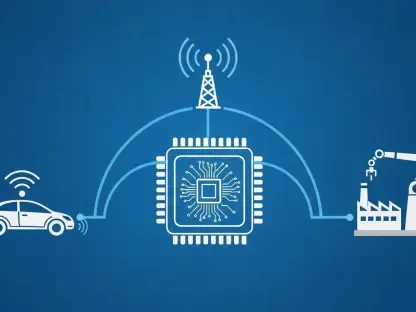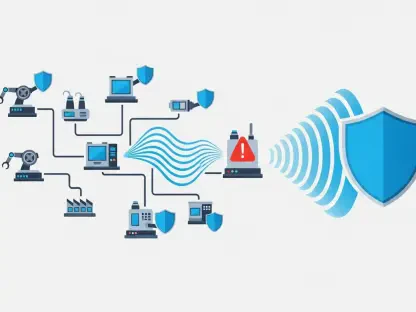In the fast-evolving world of broadband and video technology, Harmonic stands as a pivotal player, casting an optimistic gaze toward 2026 with the promise of unified DOCSIS 4.0 technology driving significant growth. Despite navigating a challenging landscape marked by delayed cable operator spending and external pressures such as U.S. tariffs, the company’s strategic foresight and adaptability paint a compelling picture of resilience. The transition to DOCSIS 4.0, a cutting-edge standard designed to deliver faster speeds and enhanced network efficiency, is central to Harmonic’s plans, even as its gradual rollout has temporarily slowed revenue streams. With leadership expressing confidence in a robust rebound next year, the stage is set for a deeper exploration of how Harmonic is positioning itself amidst industry shifts and technological advancements, offering a glimpse into a future where innovation and market dynamics align for a stronger foothold.
Industry Challenges and Harmonic’s Response
Navigating 2025 Headwinds
Harmonic faces a complex set of challenges this year as cable operators delay spending while transitioning to unified DOCSIS 4.0 technology, a shift driven by the slow maturation of Broadcom-based silicon for critical network components like nodes and modems. These delays have created a ripple effect across the industry, impacting Harmonic’s broadband revenue and forcing a reevaluation of short-term expectations. Beyond technological hurdles, external pressures such as U.S. tariffs have added another layer of complexity, initially threatening a substantial financial hit. Yet, Harmonic’s proactive measures have proven effective, with supply chain adjustments slashing the anticipated $3 million impact in Q2 to under $1 million. This adaptability highlights a strategic approach to mitigating risks, ensuring that temporary setbacks do not derail long-term ambitions. The ability to navigate these dual challenges of spending lags and policy-driven costs underscores Harmonic’s operational agility in a turbulent market environment.
Adding to the intricacies of the current landscape, Harmonic must contend with an industry-wide hesitation among operators to commit to large-scale upgrades until DOCSIS 4.0 solutions are fully mature. This cautious stance, while understandable given the high stakes of network investments, has led to uneven cash flows for technology providers like Harmonic. However, the company’s response has been to double down on innovation and operational efficiency, ensuring that it remains a trusted partner for operators gearing up for future deployments. Tariff-related challenges, though initially daunting, have been managed through diversification of supply chains and strategic cost controls, reflecting a broader industry trend of resilience against geopolitical headwinds. Harmonic’s ability to maintain stability during this period of uncertainty positions it favorably as the market anticipates a spending resurgence in 2026, driven by technological readiness and renewed operator confidence.
Financial Performance Insights
Harmonic’s financial results for Q2 of this year present a nuanced snapshot of a company in transition, balancing declines in certain segments with unexpected strengths in others. Total revenues reached $138 million, a slight dip compared to the previous year, yet surpassing analyst forecasts, which suggests underlying market confidence. The broadband segment saw a 6.5% decline to $86.9 million, a direct consequence of operator spending delays tied to DOCSIS 4.0 transitions. In contrast, the video segment shone brightly, growing 11.6% to $51.1 million, propelled by robust demand for software-as-a-service (SaaS) solutions. This dichotomy illustrates Harmonic’s diversified portfolio, which acts as a buffer against sector-specific downturns. The mixed performance reflects broader industry trends where technological shifts create temporary gaps, yet also open avenues for growth in innovative areas like video delivery.
Looking ahead, Harmonic’s guidance for Q3 remains cautious, projecting revenues between $120 million and $135 million, a range that contributed to a 4% drop in share prices following the earnings release. This conservative outlook underscores the uncertainty surrounding operator spending timelines and the pace of DOCSIS 4.0 adoption. Investors appear wary of short-term volatility, yet the strength in the video segment offers a counterbalance, signaling potential for recovery as market conditions stabilize. Harmonic’s financial strategy during this period focuses on maintaining liquidity and investing in key growth areas, ensuring readiness for an anticipated uptick in demand next year. The company’s ability to exceed expectations despite broadband challenges suggests a deeper resilience, one that could translate into stronger market positioning when industry spending aligns with technological advancements in 2026.
Strategic Growth with DOCSIS 4.0
Technology Maturation and Adoption
The cornerstone of Harmonic’s growth strategy lies in the maturation of unified DOCSIS 4.0 technology, a game-changer poised to redefine cable network capabilities with higher speeds and improved efficiency. Products such as fiber nodes with remote PHY devices (RPDs) and RF front-end trays are advancing through real-world deployments and rigorous lab testing, signaling readiness for broader adoption. Operators like Mediacom Communications are already integrating these solutions into their upgrade plans, a move that validates Harmonic’s technological direction. The gradual rollout of Broadcom-based silicon has delayed full-scale implementation this year, but the progress made in testing and deployment sets a strong foundation for a significant revenue boost in 2026. Harmonic’s focus on aligning product development with operator needs ensures that it remains at the forefront of this transformative shift in the cable industry.
Beyond initial deployments, the momentum behind DOCSIS 4.0 adoption is gaining traction as more operators recognize the long-term benefits of enhanced network capacity and performance. Harmonic’s proactive engagement with customers through testing phases and pilot programs fosters trust and accelerates integration timelines. The company’s investment in refining these technologies addresses critical pain points for operators, such as scalability and cost-efficiency, which are essential for justifying large-scale capital expenditures. As the industry moves closer to widespread adoption next year, Harmonic’s early-mover advantage in unified DOCSIS 4.0 solutions could translate into a dominant market share. This strategic positioning not only mitigates current delays but also prepares Harmonic to capitalize on the expected surge in demand, aligning technological innovation with market readiness for a robust growth trajectory.
Market Leadership in Virtual Solutions
Harmonic’s dominance in the virtual cable modem termination system (vCMTS) market, powered by its cOS platform, represents a critical pillar of its competitive strength. Supporting over 35.3 million cable modems across 136 customers as of Q2 this year, the platform far outpaces competitors like CommScope and Vecima Networks, cementing Harmonic’s leadership in virtualized network solutions. The scalability and flexibility offered by vCMTS technology appeal to operators seeking cost-effective alternatives to traditional hardware-based systems, especially during a period of tight budgets. Harmonic’s ability to expand its customer base, adding seven new clients recently, demonstrates the platform’s growing appeal and reliability. This market position provides a stable revenue stream even as broader industry spending fluctuates, offering a buffer against short-term challenges.
The competitive landscape in the vCMTS space continues to evolve, with new entrants like Vecima Networks securing initial wins with major operators such as Cox Communications. Yet, Harmonic’s established presence and extensive customer network create a high barrier to entry for rivals, ensuring sustained leadership. The cOS platform’s continuous updates and enhancements reflect Harmonic’s commitment to staying ahead of technological curves, addressing operator needs for adaptability in dynamic network environments. As DOCSIS 4.0 adoption accelerates, the synergy between virtualized solutions and next-generation standards could further solidify Harmonic’s edge. This focus on innovation and customer support positions the company to not only retain existing clients but also attract new ones, paving the way for expanded market influence in the coming year and beyond.
Customer Dynamics and Legislative Support
Key Customer Relationships
Harmonic’s revenue stability heavily relies on key customer relationships, with Comcast standing out as a major contributor, accounting for 39% of Q2 revenues this year. This partnership provides a critical anchor amidst industry volatility, ensuring a consistent income stream even as other operators scale back. However, the reduced spending from Charter Communications, driven by shifts in its hybrid fiber/coax (HFC) network upgrade plans, has introduced a temporary setback. While Charter’s strategic pivot reflects broader industry reevaluations, it underscores the risk of over-reliance on a concentrated customer base. Harmonic’s efforts to mitigate this risk involve diversifying its client portfolio, seeking to balance revenue sources and reduce exposure to individual operator decisions, a strategy crucial for long-term financial health.
Diversification efforts are gaining momentum as Harmonic engages with smaller and mid-tier operators to expand its footprint beyond major players like Comcast. This approach not only spreads financial risk but also taps into emerging markets where demand for advanced broadband solutions is on the rise. The challenge lies in maintaining high service levels across a broader client spectrum while addressing the unique needs of each operator. Harmonic’s tailored solutions and strong track record with large-scale deployments provide a competitive advantage in these efforts. As the company navigates Charter’s spending adjustments, the focus on building new relationships ensures a more resilient revenue model, preparing Harmonic for sustained growth when market conditions improve in 2026. This strategic balance between maintaining key accounts and exploring new opportunities is essential for navigating current dynamics.
Policy Boost for Broadband
Legislative developments are poised to play a significant role in shaping Harmonic’s growth trajectory, with the passage of the One Big Beautiful Bill Act (OBBBA) offering a notable boost to the broadband sector. This bill, designed to encourage network investments through tax incentives, aligns with industry-wide calls for enhanced connectivity infrastructure. Harmonic, alongside peers like AT&T and Charter Communications, views this policy as a catalyst for increased operator spending, which could accelerate upgrade cycles in the near future. The anticipated influx of capital into broadband projects dovetails with Harmonic’s readiness to supply cutting-edge DOCSIS 4.0 and virtualized solutions, positioning the company to benefit directly from this legislative tailwind. Such support is timely, given the current hesitancy in operator budgets, and could reshape market dynamics significantly.
The broader implications of policies like OBBBA extend beyond immediate financial incentives, fostering a long-term environment conducive to technological advancement in the cable industry. Harmonic’s strategic planning already accounts for an uptick in demand driven by such legislative measures, with product development timelines aligned to meet operator needs as funding becomes available. Industry sentiment suggests that these policies could bridge the gap between current spending delays and future investments, creating a smoother transition to next-generation technologies. Harmonic’s proactive stance in advocating for and preparing for these changes ensures it remains a key player in discussions around broadband expansion. Looking back, the groundwork laid through strategic foresight and policy engagement proved instrumental in navigating past challenges, setting a clear path for capitalizing on emerging opportunities in 2026 and beyond.









